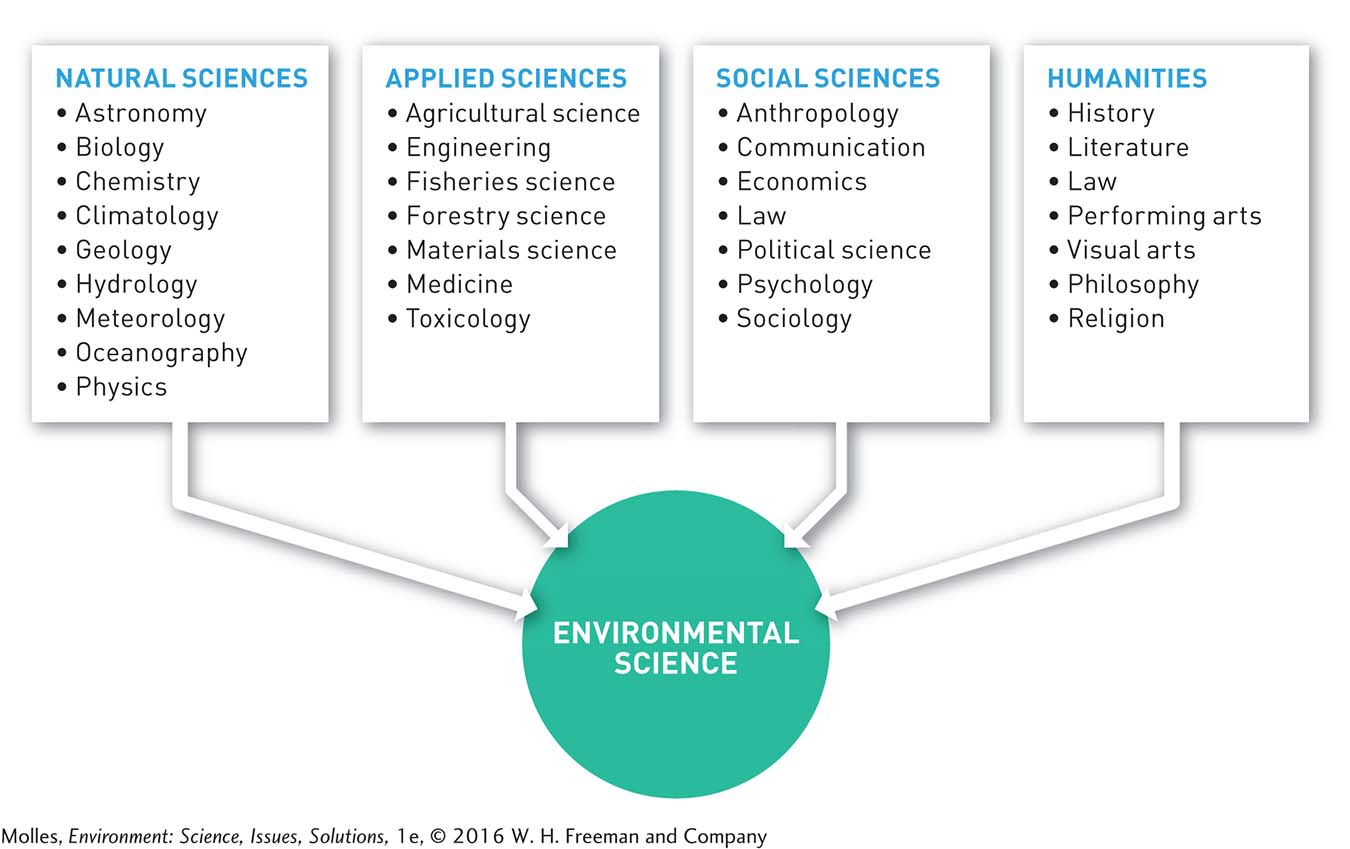1.9 Environmental science provides a comprehensive framework for addressing environmental issues

Is any subject area making up the complex discipline of environmental science more significant than the others in addressing environmental issues?
Because of the complexity of the problems it addresses, environmental science is highly interdisciplinary (Figure 1.30). It draws from all the natural sciences, including chemistry, physics, biology, geology, meteorology, and climatology. And since it addresses practical problems, environmental science also draws heavily from the applied sciences, such as engineering, agricultural science, and toxicology. In addition, literature, art, and music provide the means to communicate the human significance of environmental issues. For instance, without Rachel Carson’s highly developed writing skills, her influence on environmental policy would likely have been far less impactful.

How ozone depletion was addressed illustrates how multiple disciplines and interests contribute to solving complex environmental issues. Journalism, for instance, played a fundamental role. In 1974 Molina and Rowland published their first paper, describing how CFCs could contribute to the breakdown of the ozone layer. When their article in Nature drew little response, they issued a press release and held a news conference to warn the public and policy makers about the potential danger to the ozone layer.
environmentalism An ideological and social movement that advocates the protection of the environment from human harm through political action and education.
These actions went beyond the boundaries of environmental science and into the realm of environmentalism, an ideological and social movement advocating protection of the environment from human harm through political action and education. Their press conference aroused intense public concern and more people wrote letters to the U.S. Congress than in response to any other issue in U.S. history up to that point except the Vietnam War. The public outcry created enough political pressure to move the federal government to action, passing legislation in 1977 to regulate any substances “reasonably anticipated to affect the stratosphere.”
27
The business community generally plays a key role in addressing environmental issues, particularly where those issues collide with economic interests. Although chemical companies eventually accepted the results, they spent a decade trying to discredit Molina and Rowland’s research. In the end, it was industrial chemists who developed a variety of substitutes for CFCs, which pose little or no threat to the ozone layer.
Where environmental impacts extend beyond national borders, diplomacy, negotiation and international treaties are essential. Discovery of the ozone hole in 1984 spurred worldwide concern. International regulation of CFC production eventually involved the United Nations and negotiations among countries around the world. The result was the Montreal Protocol.
In the coming chapters, we will discuss the most pressing contemporary environmental issues, build the science necessary to engage with those issues, and explore some of the solutions to them (see Figure 1.13). We will necessarily draw on many subject areas as we do so. As a result of drawing from so many areas of knowledge and skill, environmental science can provide a path to solving environmental issues, which threaten not just nature, but our health and livelihoods as well.
Think About It
The environmental science framework includes natural sciences, applied sciences, social sciences, and humanities. What roles do each of these areas of knowledge play in solving environmental problems?
Is environmental science in fact a “science”? If so, what type of science is it? If not, how would you classify the subject?
1.7–1.9 Solutions: Summary
Perspectives on nature and the environment range from very human-
Sustainability includes developing policies, practices, and technologies to provide us with enough clean water, food, energy, and other resources crucial to human health over the long term. Environmental science can help us achieve this, by drawing on findings and ideas from the natural sciences, applied sciences, social sciences, and humanities.
28